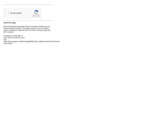
powerpoint for second unit in cinema scenes film history book chapters 8 through 13
- Subject:
- Arts and Humanities
- Material Type:
- Lecture Notes
- Author:
- daniels
- lenig
- mccready
- sherrill
- broadbent
- Date Added:
- 07/16/2022

powerpoint for second unit in cinema scenes film history book chapters 8 through 13

"What then is the American, this new man?" asked J. Hector St-John de Crèvecoeur in his Letters from an American Farmer in 1782. This subject takes Crèvecoeur's question as the starting point for an examination of the changing meanings of national identity in the American past. We will consider a diverse collection of classic texts in American history to see how Americans have defined themselves and their nation in politics, literature, art, and popular culture. As a communications-intensive subject, students will be expected to engage intensively with the material through frequent oral and written exercises.

This class examines how and why twentieth-century Americans came to define the "good life" through consumption, leisure, and material abundance. We will explore how such things as department stores, nationally advertised brand-name goods, mass-produced cars, and suburbs transformed the American economy, society, and politics. The course is organized both thematically and chronologically. Each period deals with a new development in the history of consumer culture. Throughout we explore both celebrations and critiques of mass consumption and abundance.
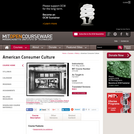
This class examines how and why twentieth-century Americans came to define the ŰĎgood lifeŰ through consumption, leisure, and material abundance. We will explore how such things as department stores, nationally advertised brand-name goods, mass-produced cars, and suburbs transformed the American economy, society, and politics. The course is organized both thematically and chronologically. Each period deals with a new development in the history of consumer culture. Throughout we explore both celebrations and critiques of mass consumption and abundance.

A Humanities Textbook: Lower Division
Short Description:
An introductory examination of cultural appropriation in the fine arts and popular arts of the United States, with reference to historical, literary, and other cultural developments. The primary focus is the use of cultural appropriation to communicate ideas about racial identity in ways that have served the interests of the dominant culture. Areas of specific concern are voice appropriation, content appropriation, style appropriation, and motif appropriation. The emphasis is on historically significant examples in the visual arts, literature, theater, and music. As expressive communication, the arts are central to cultural identity. Cultural appropriation is wrong when it undermines America's diversity of cultural identities. Generations of American artists have used cultural appropriation as a tool of racial privilege. Despite this history of harmful and wrongful appropriation, cultural appropriation also provides a tactic of response and self-empowerment for non-dominant groups. Appropriation is frequently used by non-dominant groups and subcultures as a tool of active resistance against stereotyping and discrimination.
Word Count: 68176
(Note: This resource's metadata has been created automatically by reformatting and/or combining the information that the author initially provided as part of a bulk import process.)
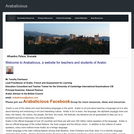
Arabalicious is a website full of resources for teachers of Arabic, run by Taoufiq Cherkaoui. The website includes PowerPoints available for download on concepts such as telling time, fruits and vegetables, culture, and basic greetings, to name a few. Worksheets to go along with the PowerPoints are also available for free download. The website further includes pictures that are available with the author's permission and some postings on available jobs for Arabic instructors as per 2012.
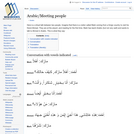
This webpage displays a common conversation between three friends. The structure and topics of the conversation are purposefully general so as to be helpful to students' ability to create and sustain conversations of their own. The conversation includes Arabic text, transliteration, and translation.
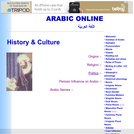
This webpage provides elementary information on aspects of Arab culture and history, including religion, politics, naming conventions, and Persian influence on Arab culture and language. The information seems to have been authored by the site's administrator, and contains no references or citations.
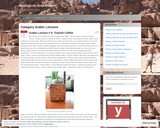
This blog is from an American woman living and working in Saudi Arabia. It includes information about living and working in Saudi Arabia as well as her travels elsewhere in the Middle East. This particular section of the blog includes lessons on Arabic, which are all transliterated. Conversations that are transliterated and translated, vocabulary lists, and cultural information are all included. The lessons include one on bread, one on time and the concept of time, and one on New Year's Resolutions.

This is a blog that links to videos, music, and other information about studying and learning Arabic. The blog provides comments on information provided. For instance, there is a link to an episode of The Simpsons in Arabic while providing sentences and translations of some of the more complicated phrasing.
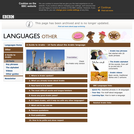
This site from the BBC hosts a brief primer on the Arabic language. It discusses such topics as where the language is spoke, where it came from, and tips on etiquette. The guide also includes interesting examples of the Arabic language, such as tongue twisters, jokes, and famous quotations.
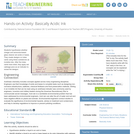
Students hypothesize whether vinegar and ammonia-based glass cleaner are acids or bases. They create designs on index cards using these substances as invisible inks. After the index cards have dried, they apply red cabbage juice as an indicator to reveal the designs.
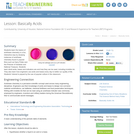
Students learn the basics of acid/base chemistry in a fun, interactive way by studying instances of acid/base chemistry found in popular films such as Harry Potter and the Prisoner of Azkaban and National Treasure. Students learn what acids, bases and indicators are and how they can be used, including invisible ink. They also learn how engineers use acids and bases every day to better our quality of life. Students' interest is piqued by the use of popular culture in the classroom.
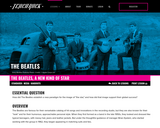
Essential Question: How did The Beatles establish a new paradigm for the image of "the star," and how did that image support their global success?

Cinema scenes film textbook.
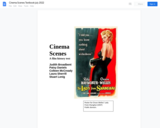
revised edition of film history text july 2022
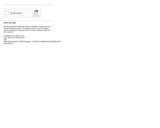
film textbook
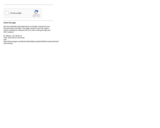
film textbook
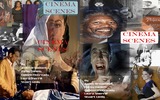
a recent revision of the film text
the revised text has altered margins deemed more helpful for printing the text....
fourth Amazon revision for printing

a textbook on the history of film